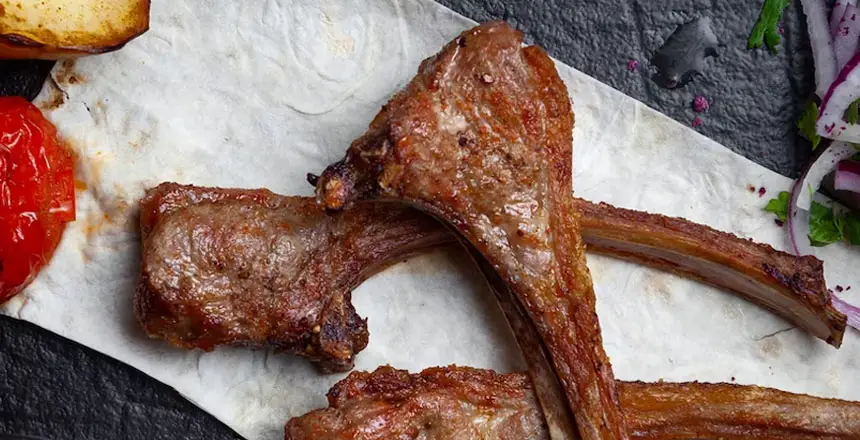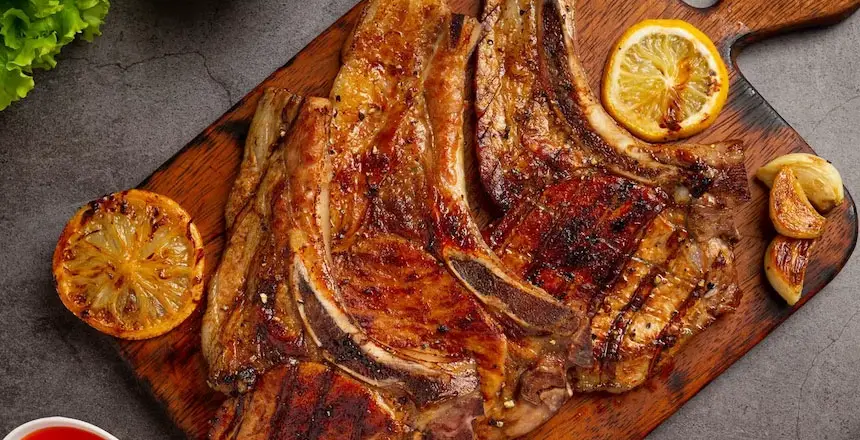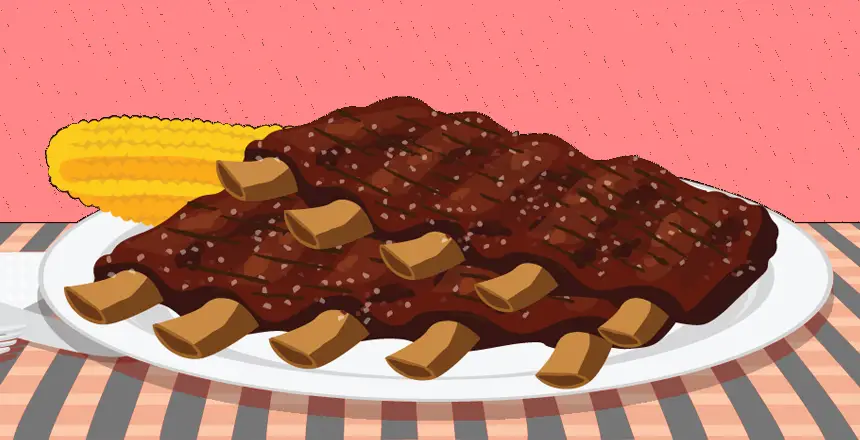If you are a fan of juicy, flavorful ribs, then you probably already know that there are several factors that contribute to a delicious end result. From choosing the right cut of meat to seasoning and cooking techniques, every step matters. But resting your ribs after cooking is just as important as the cooking process itself.
So, how long to let the ribs rest after cooking? Drawing from my experience, based on the different kinds of ribs, 10 – 20 minutes is a suitable time for ribs to rest.
Keep reading to dive into the exact time to let each kind of ribs rest after cooking as well as why it’s necessary and how to let them rest.
Related:
- Types of Pork Ribs
- How Many Ribs in a Half Rack
- How Long to Smoke Ribs At 275°F
- How Long To Smoke Ribs At 225 F
Do Ribs Need to Rest?

Absolutely! Resting ribs after they have been cooked is an essential step because resting allows the meat to relax and reabsorb its juices, resulting in a more flavorful and tender eating experience.
When ribs are cooked, the heat causes the juices to move toward the center of the meat. If you were to cut into the ribs immediately after cooking, those precious juices would escape, leading to drier meat. By allowing the ribs to rest, you give the juices time to redistribute throughout the meat, ensuring a moist and succulent texture.
However, serving cold ribs can diminish the desired tenderness and flavor. While letting the ribs rest is crucial, they should be served while still warm.
How Long to Let the Ribs Rest?
So, how long to let the ribs rest after cooking? The answer is the duration of the resting period for ribs can vary depending on the kind of ribs, cooking method, and personal preference. After conducting experiments, it is recommended to let the ribs rest for around 10 to 15 minutes. This brief interval allows the juices to redistribute within the meat, ensuring a moist and succulent bite. However, for larger cuts or slow-cooked ribs, a resting time of 20 to 30 minutes may be more suitable. However, you must pay attention to be sure that your ribs rest too long to be cold off.
During the resting period, the internal temperature of the ribs will also continue to rise slightly. This is known as carryover cooking. By accounting for this additional cooking time, you ensure that the ribs reach their desired level of doneness while resting.

How to Let Ribs Rest?
Now, you have known how long to let your ribs rest, let’s find out the right way to let ribs rest.
Remove from Heat: Once the ribs have reached their desired level of doneness or when the internal temperature reaches 195 degrees F, carefully remove them from the heat source.
Tent with Foil: Place the ribs on a cutting board and loosely tent them with aluminum foil. Aluminum foil not only helps retain heat and promotes even distribution of the juices but also acts as a barrier, preventing the ribs from cooling too quickly.
Maintain Warmth: Keep the ribs in a warm place while they rest. Ideally, choose a location away from drafts to maintain a stable temperature. This allows the meat to continue cooking gently while the juices settle back into the fibers, enhancing flavor and tenderness.
Resting Time: Let the ribs rest for the recommended duration. As mentioned earlier, a general guideline is around 10 to 15 minutes. However, for larger cuts or slow-cooked ribs, a resting time of 20 to 30 minutes may be more suitable.
FAQs
Should Ribs Rest Covered or Uncovered?
Ribs should generally be rested covered to retain heat and promote even distribution of the juices. Covering the ribs helps to create a warm and controlled environment that allows the meat to continue cooking gently while the flavors develop and the juices redistribute.
Do Ribs Go Face Down or Up after Wrapping?
When wrapping ribs, it is generally recommended to place the meat face down (bone face up) in the wrap. This is because the bone side of the ribs tends to be flatter, making it easier to create a tight seal when wrapping.
Can You Put Ribs in a Cooler After Smoking?
Yes, you can put ribs in a cooler after smoking as a way to keep them warm and tender while they rest. This is a common technique used in barbecue competitions and catering events to keep the meat at the desired temperature and ensure it stays moist and tender.
What Happens If You Wrap Ribs Too Early?
If you wrap ribs too early, it can result in a softer bark and potentially overcooked or overly tender meat. The bark may not develop the desired caramelized texture, and the extended cooking time can affect the overall texture and tenderness of the ribs.
Final Thought
In conclusion, properly resting ribs is an essential step in the cooking process that shouldn’t be overlooked. To let ribs rest, remove them from the heat source and loosely tent them with foil to retain heat. Keep the ribs in a warm place away from drafts for the recommended duration, typically around 10 to 15 minutes. This resting period allows the flavors to meld and the juices to settle back into the meat.
By following the recommended resting time, connect each stage seamlessly, and savor the rewards of a beautifully rested rack of ribs that will have your guests asking for seconds.


